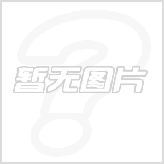儿童急性中耳炎诊断治疗指南
《儿童急性中耳炎诊断治疗指南》内容简介
ABSTRACT. This evidence-based clinical practiceguideline provides recommendations to primary care cli-nicians for the management of children from 2 monthsthrough 12 years of age with uncomplicated acute otitismedia (AOM)。
The American Academy of Pediatrics and AmericanAcademy of Family Physicians convened a committeecomposed of primary care physicians and experts in thefields of otolaryngology, epidemiology, and infectiousdisease. The subcommittee partnered with the Agencyfor Healthcare Research and Quality and the SouthernCalifornia Evidence-Based Practice Center to develop acomprehensive review of the evidence-based literaturerelated to AOM. The resulting evidence report and othersources of data were used to formulate the practice guide-line recommendations. The focus of this practice guide-line is the appropriate diagnosis and initial treatment ofa child presenting with AOM.
The guideline provides a specific definition of AOM.It addresses pain management, initial observation versusantibacterial treatment, appropriate choices of antibacte-rials, and preventive measures. Decisions were madebased on a systematic grading of the quality of evidenceand strength of recommendations, as well as expert con-sensus when definitive data were not available. The prac-tice guideline underwent comprehensive peer review be-fore formal approval by the partnering organizations.
This clinical practice guideline is not intended as a solesource of guidance in the management of children withAOM. Rather, it is intended to assist primary care clini-cians by providing a framework for clinical decision-making. It is not intended to replace clinical judgment orestablish a protocol for all children with this condition.These recommendations may not provide the only appro-priate approach to the management of this problem.
《儿童急性中耳炎诊断治疗指南》内容预览
a significant impact on the health of children, cost ofproviding care, and overall use of antibacterialagents. The illness also generates a significant socialburden and indirect cost due to time lost from schooland work. The estimated direct cost of AOM was$1.96 billion in 1995. In addition, the indirect costwas estimated to be $1.02 billion.1During 1990 therewere almost 25 million visits made to office-basedphysicians in the United States for otitis media, with809 antibacterial presc**tions per 1000 visits, for atotal of more than 20 million presc**tions for otitismedia–related antibacterials. Although the totalnumber of office visits for otitis media decreased to16 million in 2000, the rate of antibacterial prescrib-ing was approximately the same (802 antibacterialpresc**tions per 1000 visits for a total of more than13 million presc**tions)。
2–4An individual course ofantibacterial therapy can range in cost from $10 tomore than $100.There has been much discussion recently as to thenecessity for the use of antibacterial agents at thetime of diagnosis in children with uncomplicatedAOM. Although in the United States the use of an-tibacterial agents in the management of AOM hasbeen routine, in some countries in Europe it is com-mon practice to treat the symptoms of AOM initiallyand only institute antibacterial therapy if clinical im-provement does not occur. For the clinician, thechoice of a specific antibacterial agent has become akey aspect of management. Concerns about the ris-ing rates of antibacterial resistance and the growingcosts of antibacterial presc**tions have focused theattention of the medical community and the generalpublic on the need for judicious use of antibacterialagents. Greater resistance among many of the patho-gens that cause AOM has fueled an increase in theuse of broader-spectrum and generally more expen-sive antibacterial agents
点击下载***《儿童急性中耳炎诊断治疗指南》
本站所注明来源为"爱爱医"的文章,版权归作者与本站共同所有,非经授权不得转载。
本站所有转载文章系出于传递更多信息之目的,且明确注明来源和作者,不希望被转载的媒体或个人可与我们
联系zlzs@120.net,我们将立即进行删除处理
- 相关阅读
- ·二手烟增加卒中后死亡风险?
- ·上呼吸道感染并发症
- ·慢性化脓性中耳炎表现
- ·儿童急性中耳炎的诊断|治疗
- ·接种流感疫苗的必要性
热点图文
-
2012手足口病诊疗指南
手足口病是由肠道病毒(以柯萨奇A组16型(CoxA16)、肠道病毒71型(...[详细]
-
2007APP美国儿童自闭症的处理
Educational interventions, including ...[详细]

